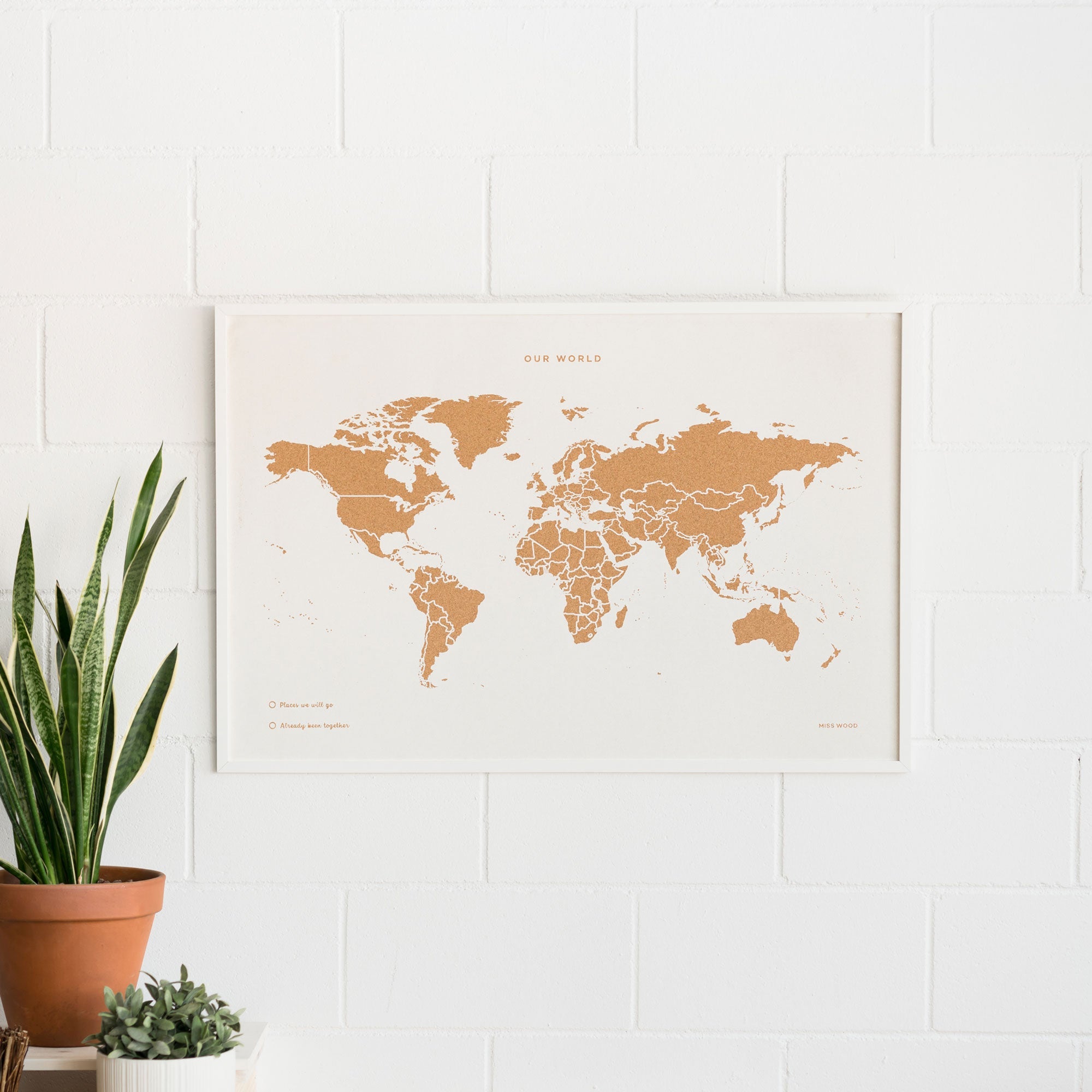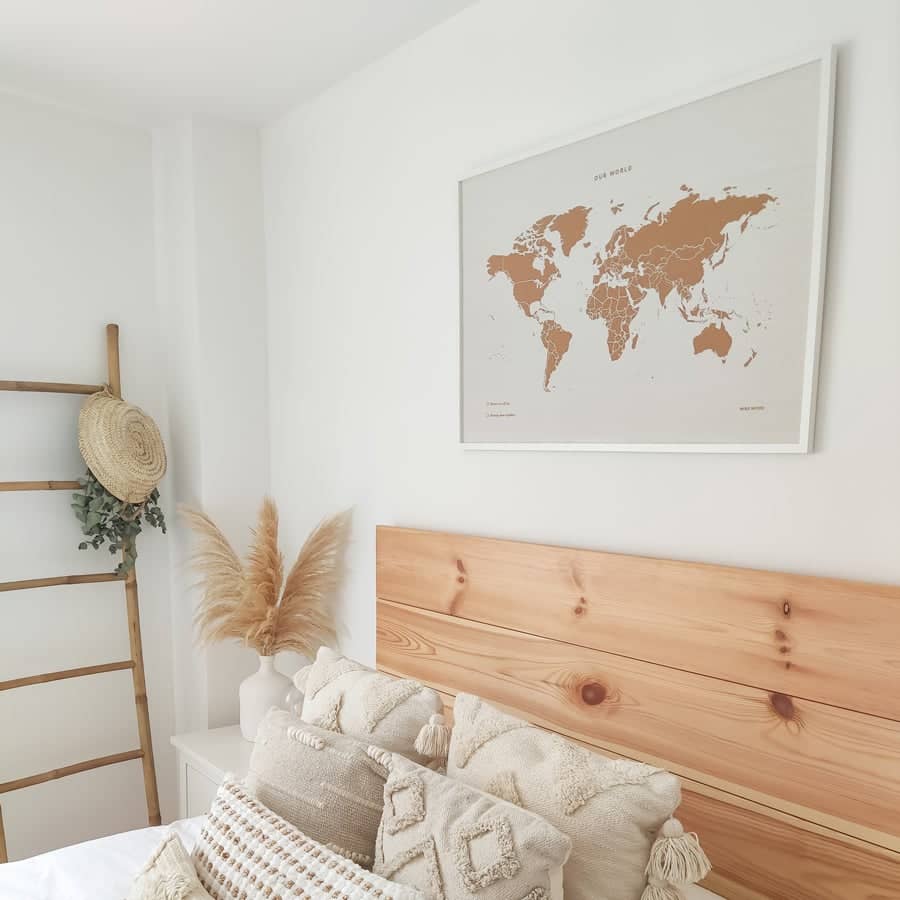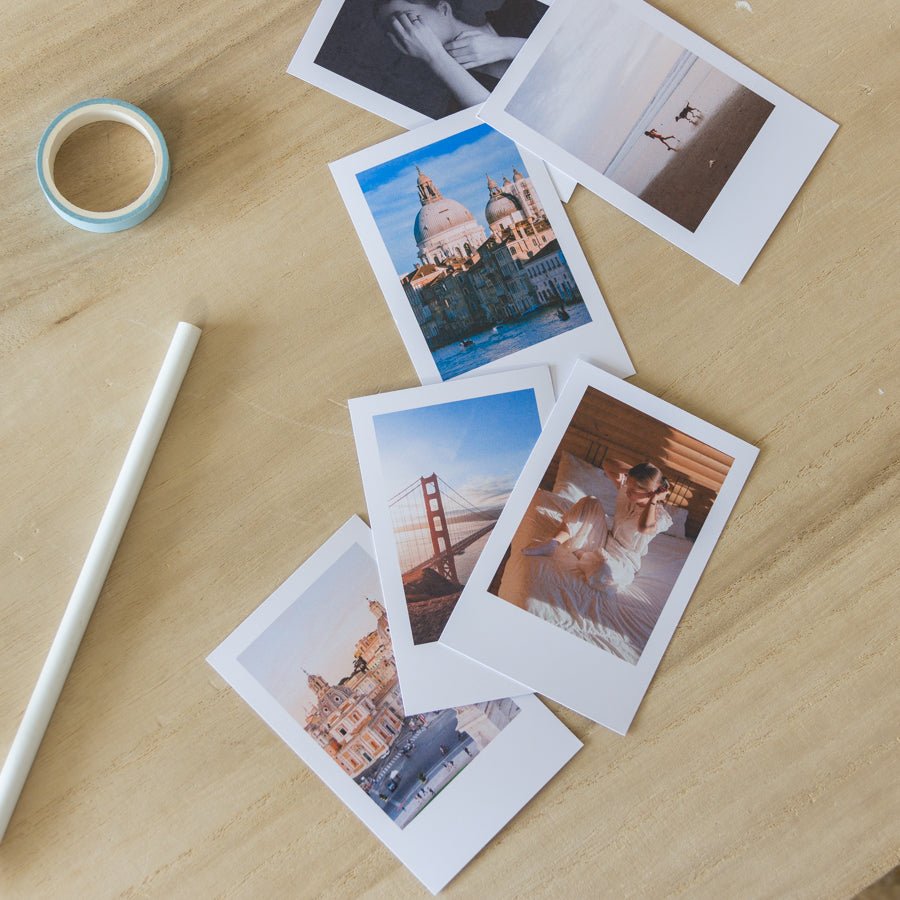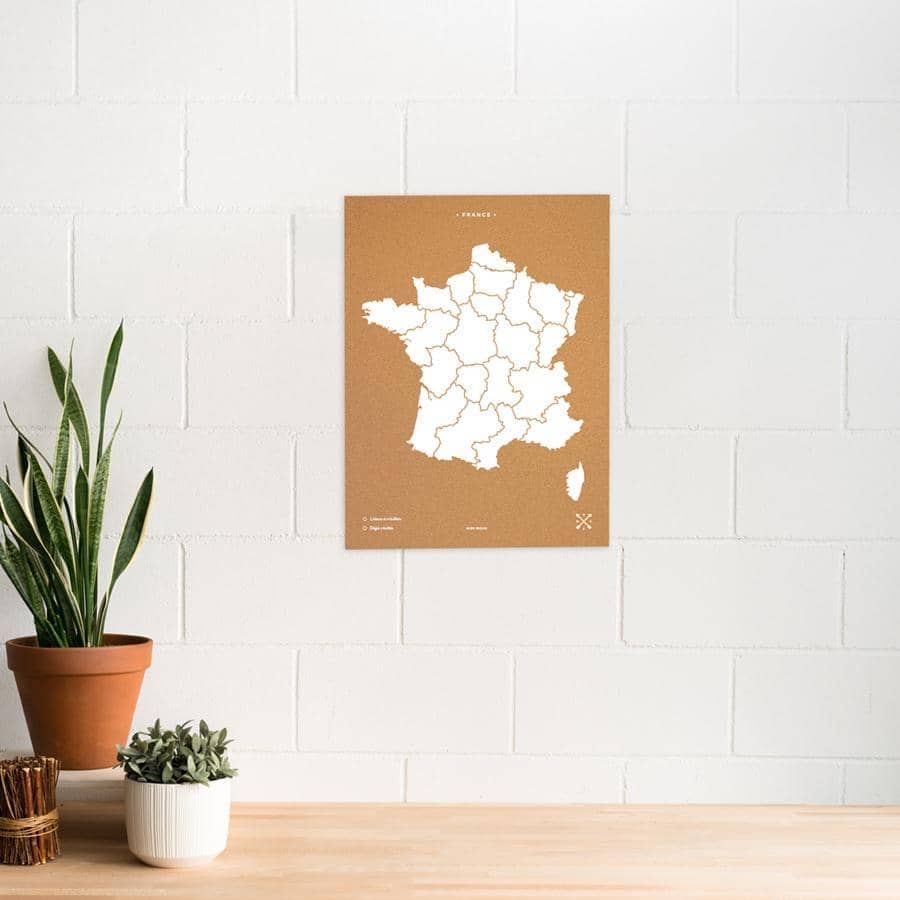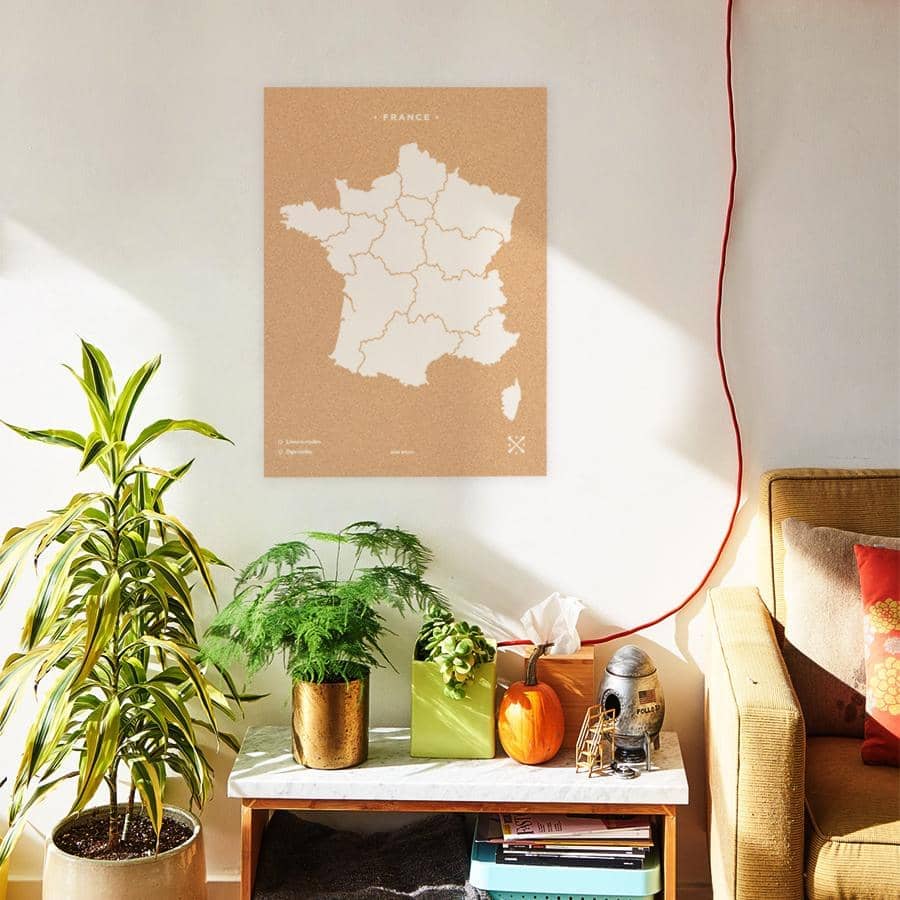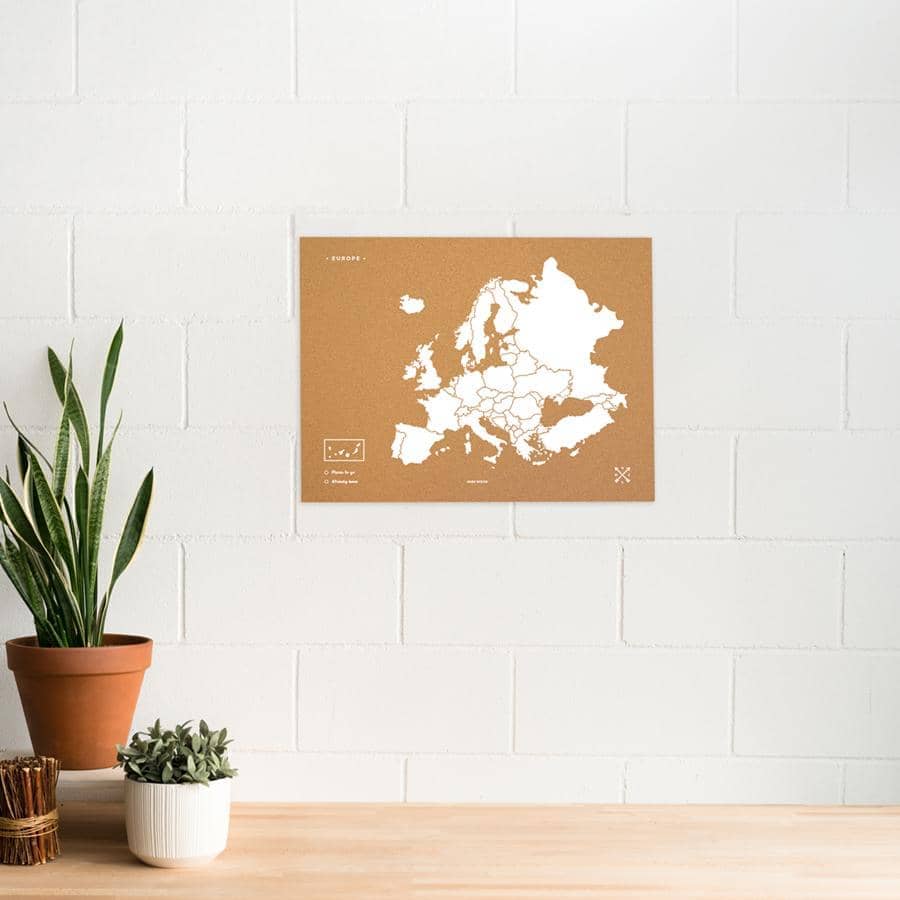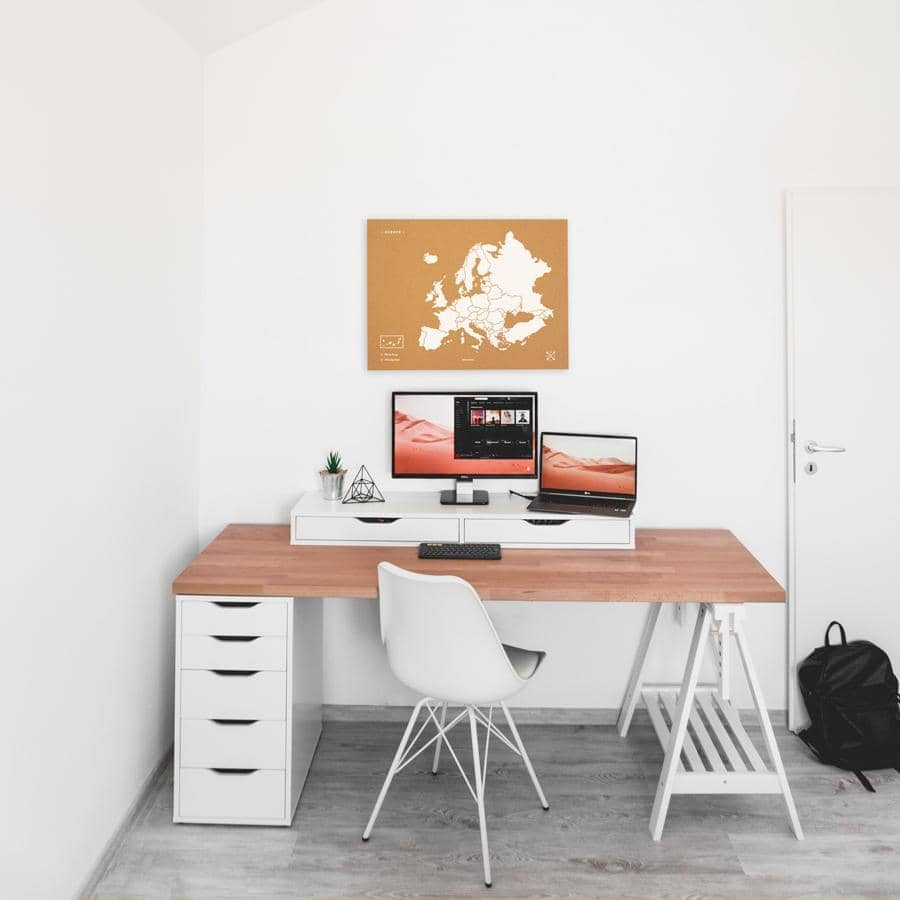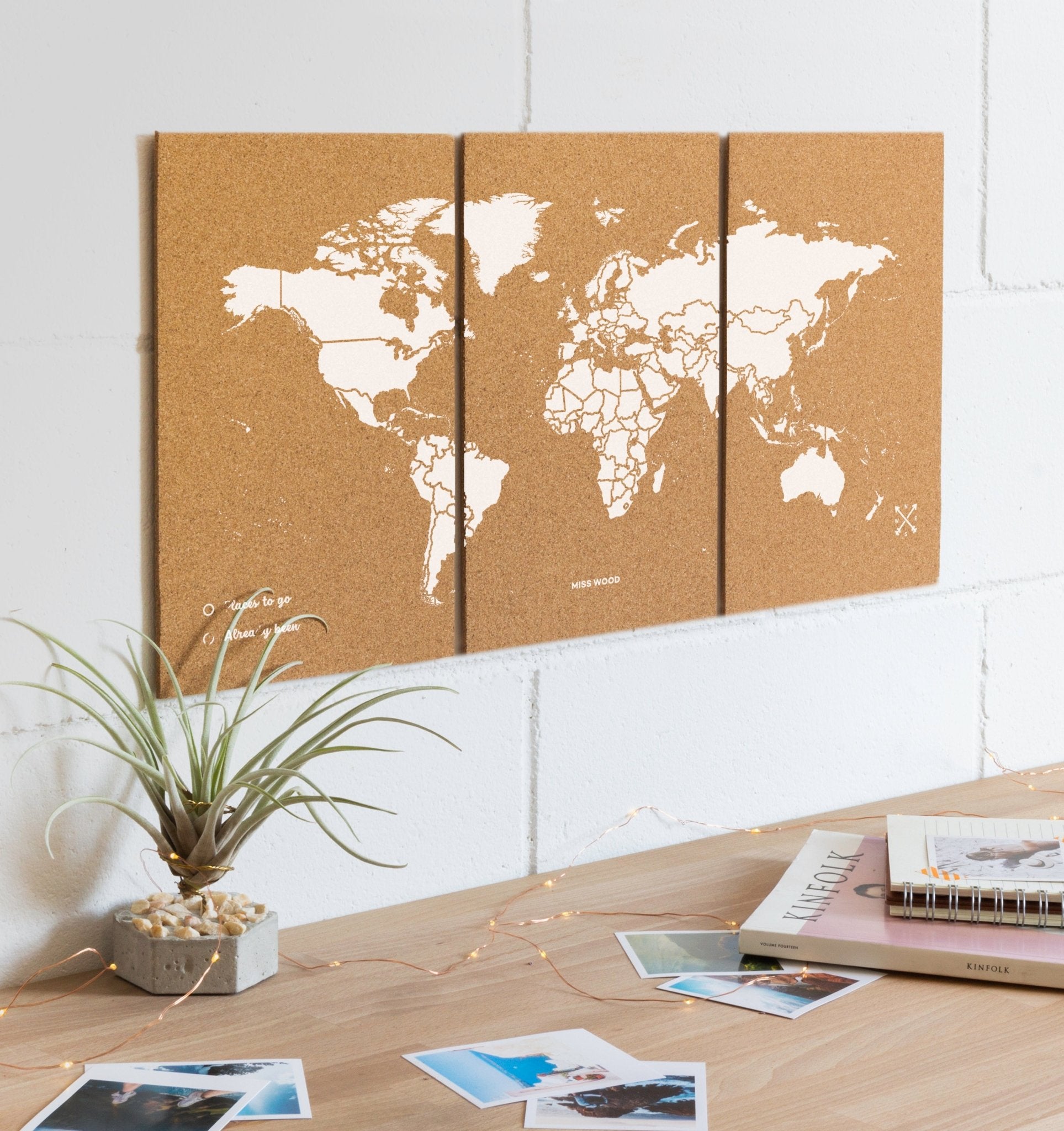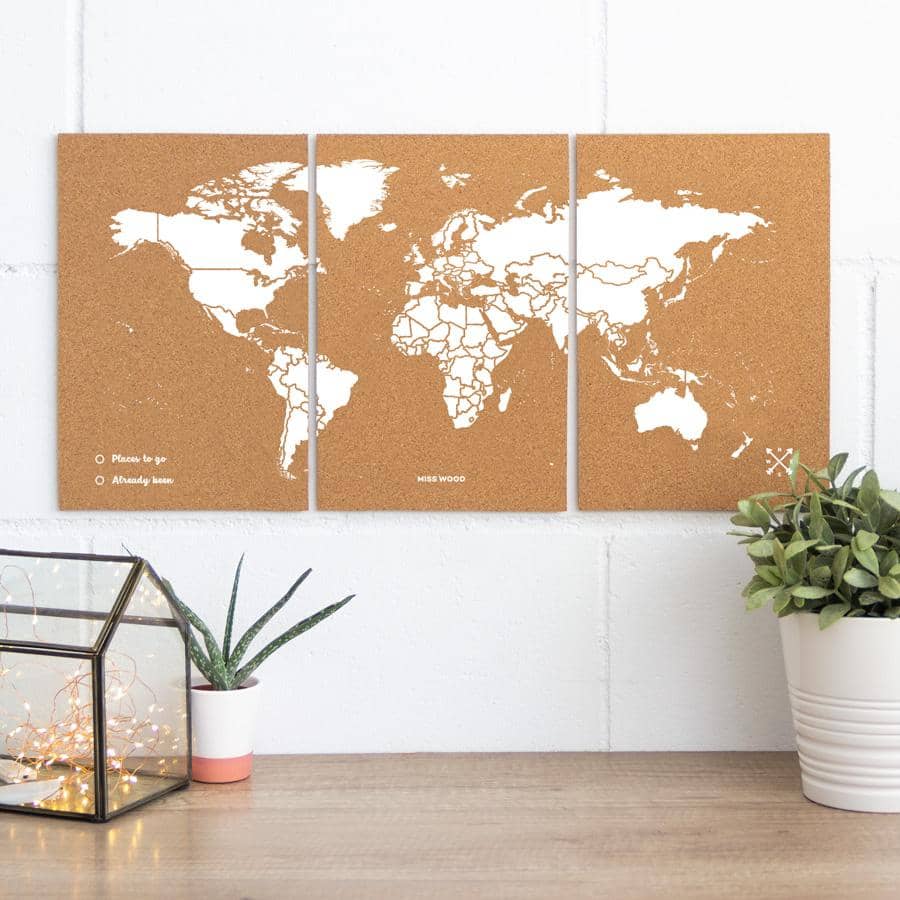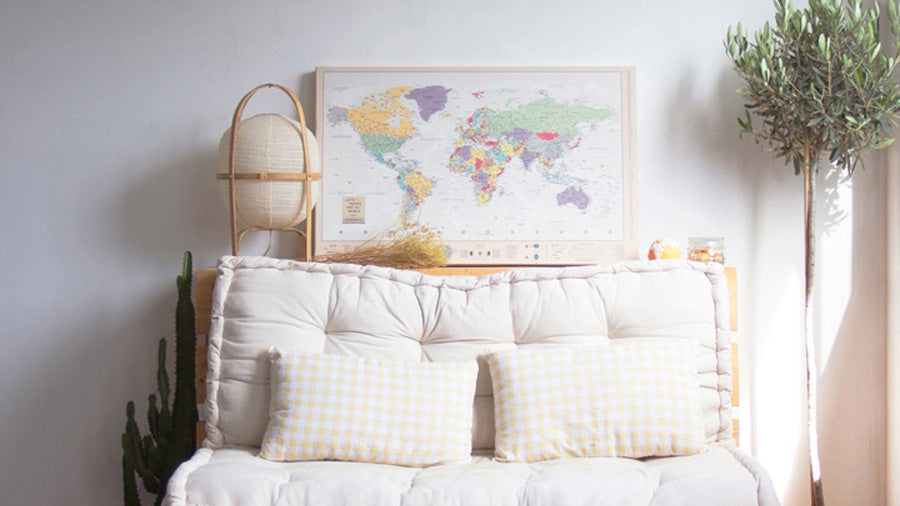1. The 2/3 rule
If you are going to hang one or more paintings over a piece of furniture, a sofa, or a headboard, don't forget that the object in question should be at least 2/3 the size of the item you are placing it next to. Or, to put it another way, it should never exceed its length.
Just calculate the proportion before you start: divide the length of the furniture by 3, and multiply the result by 2.
You can see this clearly in this example:
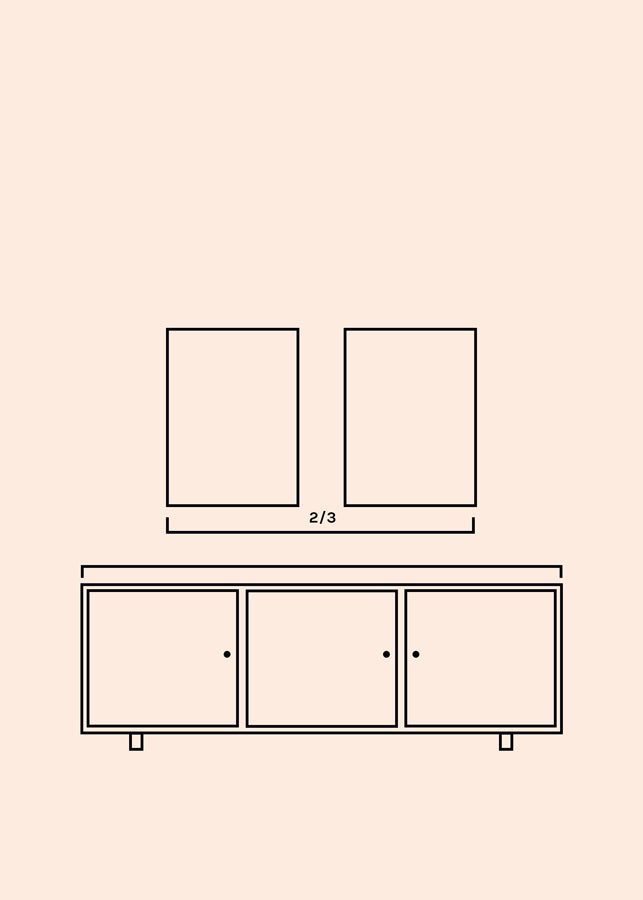
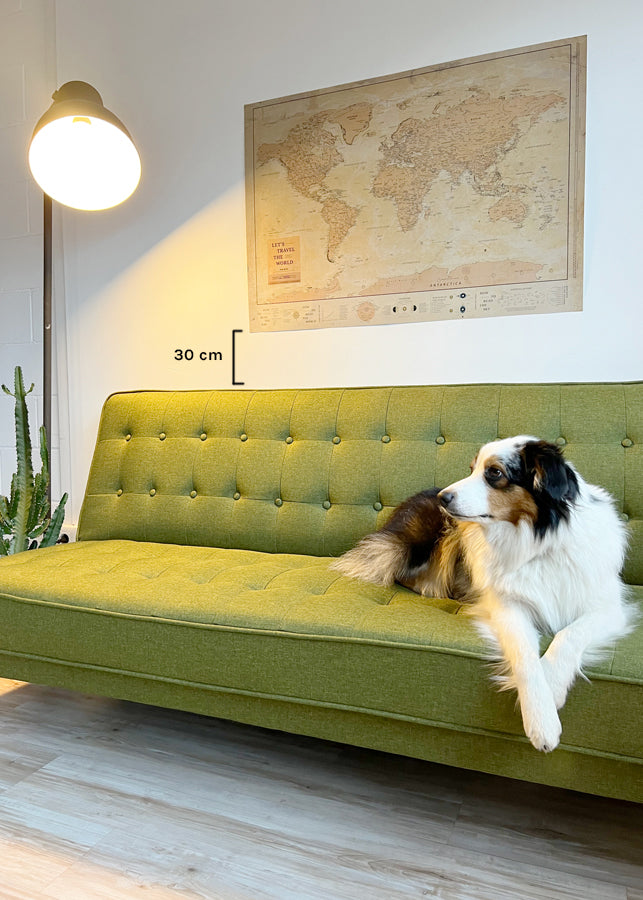
2. Distance matters
3. Spacing
The minimum distance between two or more pictures should be proportional to their size. In other words: the bigger they are, the more space is to be left between them.
The minimum distance is 5-10 cm.
Always apply the 2/3 rule when hanging pictures or photos above a decor element.
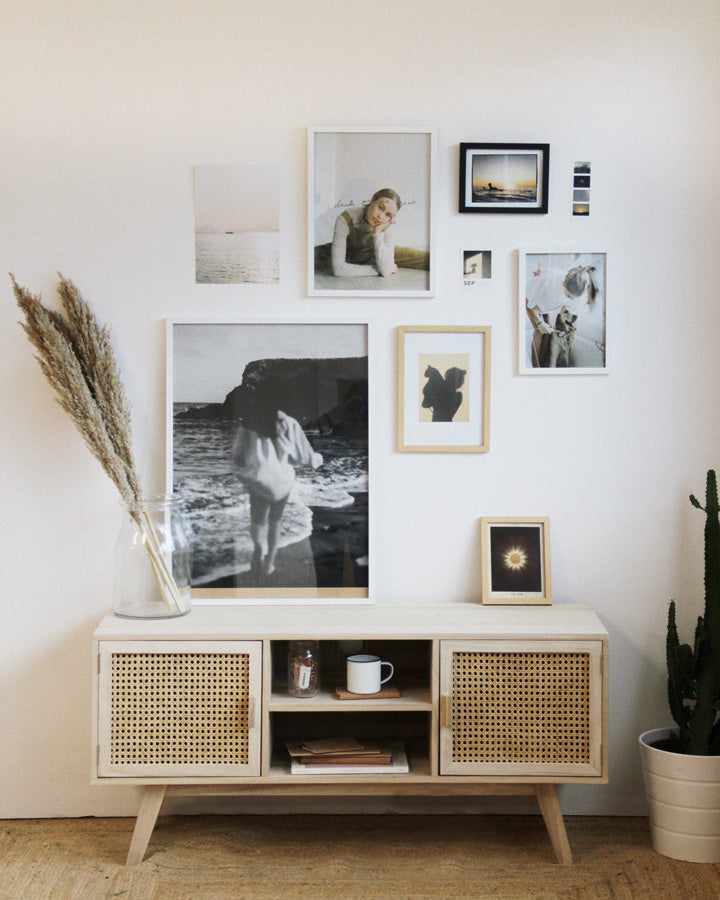
Create your own picture gallery at home View all
4. Define the composition in advance.
Before acting, plan your compositions carefully. You can try out the layout on the floor or draw it on paper, so it will be easier to visualize it and achieve a result that reflects your wishes.
If you opt for a floor preview, arrange the images upside down to note measures and the different types of fixing. It will make it easier to transfer them to the wall later.
If you prefer to use paper, cut the sheets the same size as the selected images and stick them on the wall with tape.
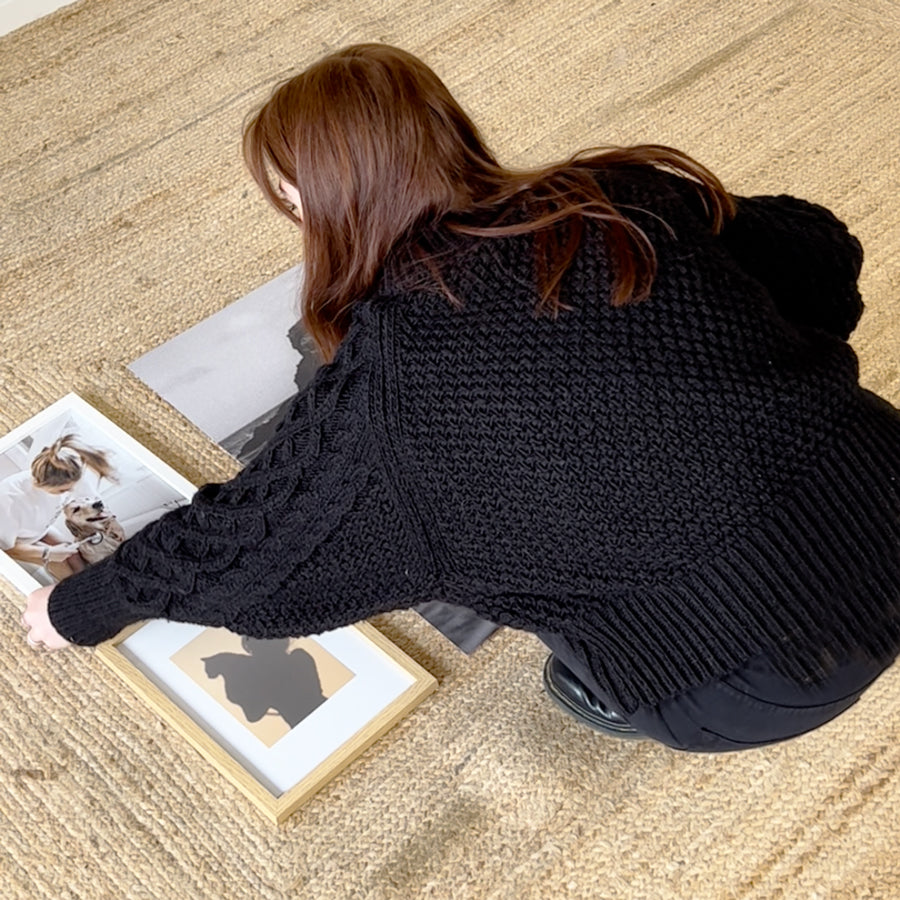
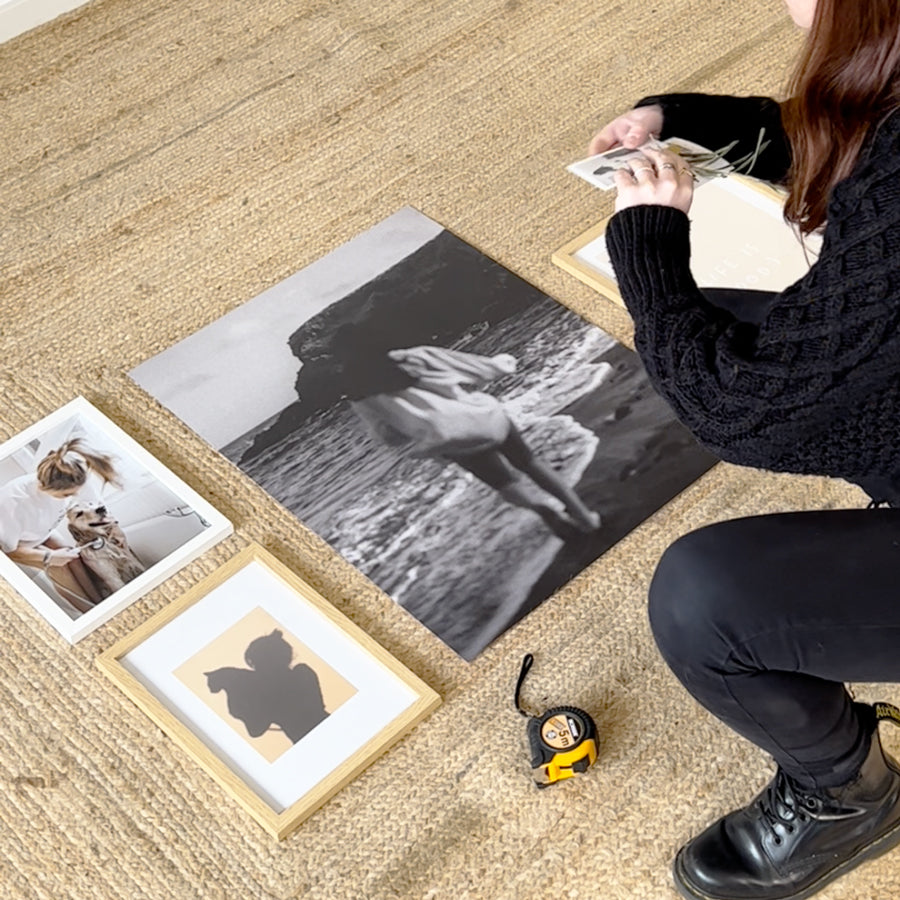
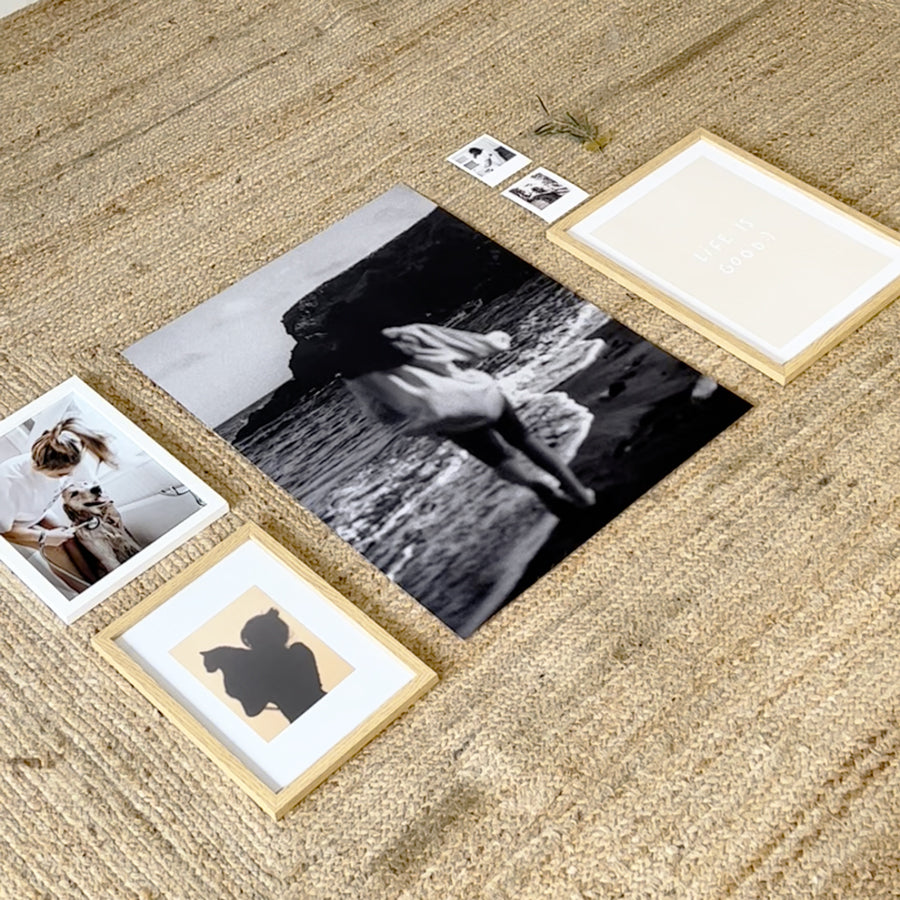
5. The golden rule
We recommend starting with the biggest image if you like combos of different sizes. Place it in the middle and gradually fill in the gaps with smaller ones. This will create an imaginary line and visual balance. Messy, yes, but with style.

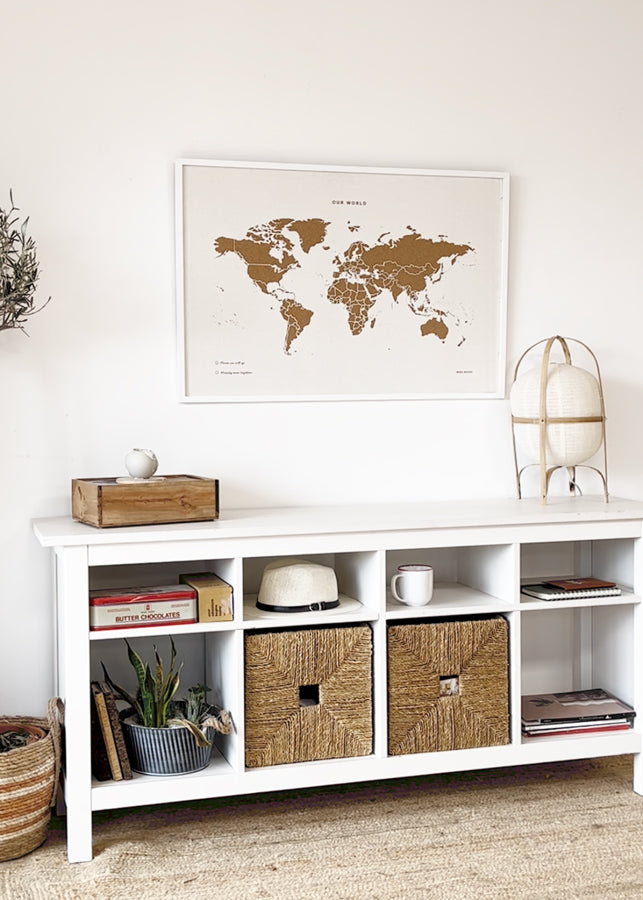
6. Maintain proportions
Your paintings or photos should be centred and harmonious with the rest of your home decor. If the ceiling is low, avoid hanging things too high to make the room look bigger, you will get the opposite effect. Never put a tiny painting on a large wall or a big piece on a small wall. Always try to keep the proportions in mind.
This rule also applies in the case of vertical or horizontal frames. For example, a vertical picture on a sofa will look disproportionate; better to opt for a design that follows the line of the furniture.
7. The right height
For empty walls, with no furniture or elements underneath, the best placement is at eye level. Approximately 150–170 cm above the floor.
8. Fixing counts
For large paintings, it is always better to use two nails to distribute the weight and prevent them from falling or damaging the wall.
For sizes of more than 50 cm wide, fixing them on both sides is essential to keep them perpendicular.
9. The level, always within reach
You can't do without a spirit level to ensure your compositions are straight. If you don't have one, you can download a mobile app—iPhone and Android offer several.
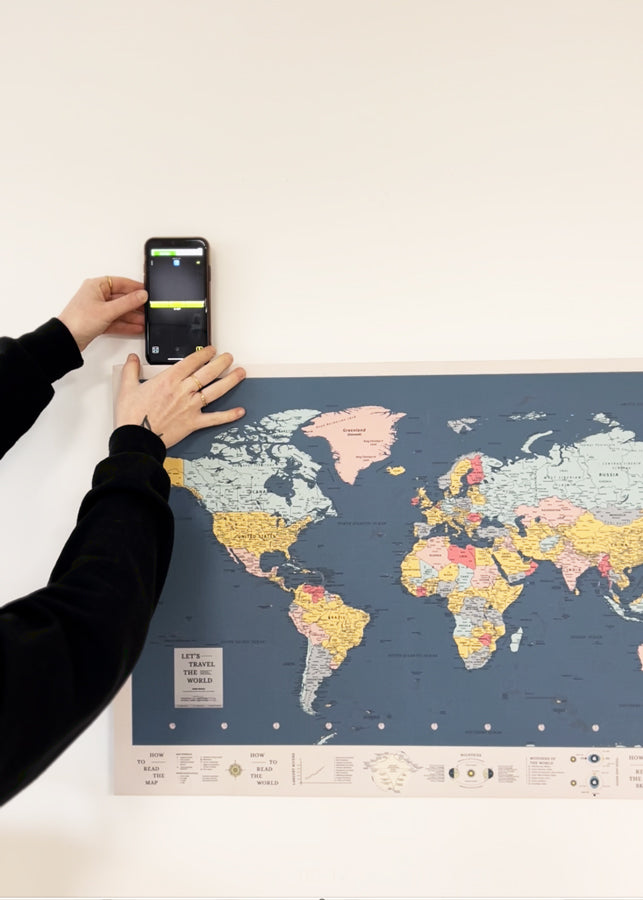
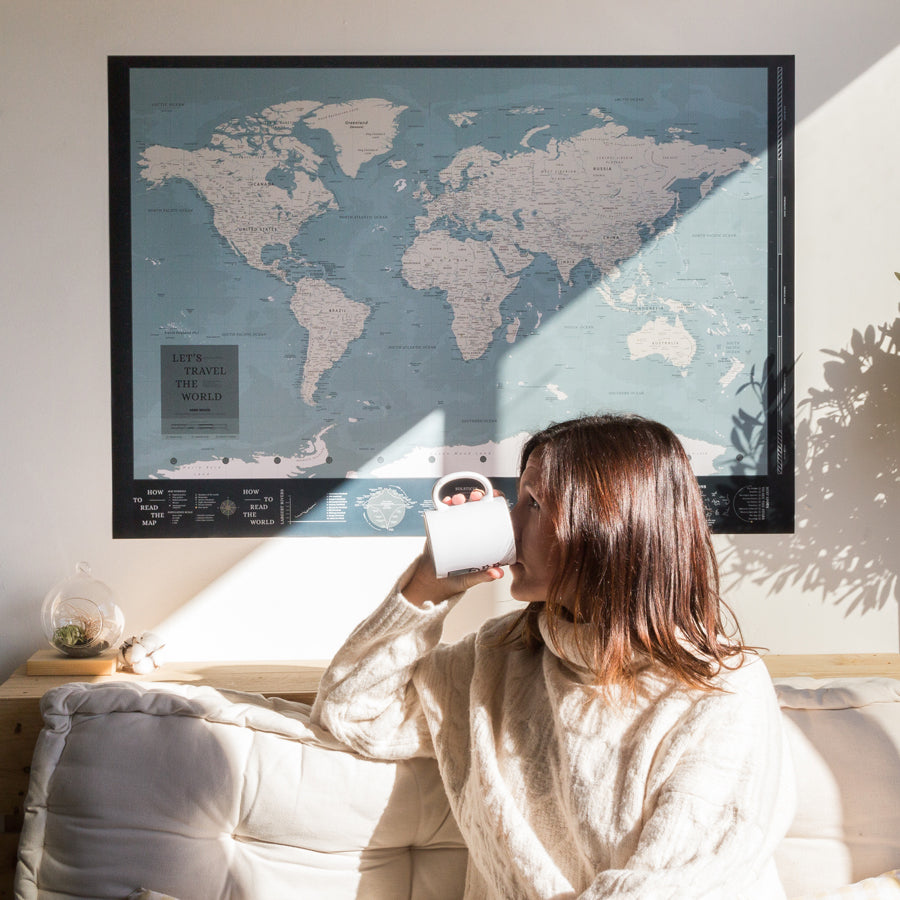
10. Lighting makes all the difference.
The proper lighting is key to highlight the piece you wish to hang.
Beware of light sources that are too strong or direct, as they will generate reflections and ruin the visibility of the image.
On the other hand, if the picture is in the shade, simply change the lighting or choose another location in the room.



